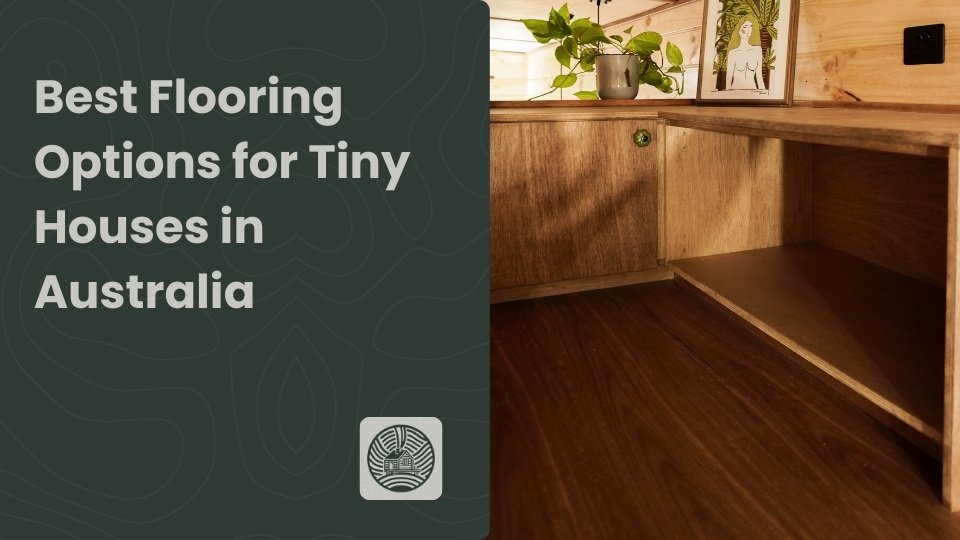Best Flooring Options for Tiny Houses in Australia
"Durable, stylish, and space-efficient flooring choices for your small home"
When designing your Tiny House, every material matters, especially the flooring. The right flooring can enhance the aesthetic appeal, improve durability, and maximise space efficiency—three essentials for making the most of your compact home. In Australia, with its unique weather conditions, it's vital to choose materials that are not only stylish but also durable and suited to varying climates. In this post, we’ll explore the top flooring options tailored to the needs of Australian Tiny House owners.
Before continuing with the information, we are builders and designers of tiny houses on wheels, you can call or email us with your questions and schedule a free consultation. Click Here
The Importance of Choosing the Right Flooring
In a Tiny House, the floor is more than just a surface to walk on—it’s a key player in defining the overall feel and functionality of your space. Since Tiny Houses have smaller footprints, the flooring needs to be both practical and hard-wearing, able to withstand heavy foot traffic, pets, and furniture movement. It also needs to align with the design aesthetic, providing a cohesive flow from one space to another without overwhelming the senses.
Best Flooring Materials for Tiny Houses
1. Vinyl Planks
Vinyl is one of the most popular choices for Tiny House flooring in Australia. It is a versatile and affordable material that comes in a wide range of styles, including wood-like finishes. Vinyl is water-resistant, making it ideal for areas prone to moisture, like the bathroom or kitchen. It’s also softer underfoot than traditional tiles or hardwood, offering more comfort in small spaces.
Pros:
Water-resistant
Easy to clean and maintain
Budget-friendly
Cons:
Can wear out faster in high-traffic areas
Some cheaper vinyls may not be environmentally friendly
2. Hardwood
For homeowners looking for a timeless, high-end look, hardwood is a classic choice. Australian timber species like Jarrah or Blackbutt are durable and locally sourced, making them a sustainable option. Hardwood floors can last for decades with proper care and provide a warm, natural look that many Tiny House owners desire.
Pros:
Long-lasting and durable
Adds natural beauty to the space
Cons:
Requires regular maintenance (e.g., sanding and polishing)
More expensive upfront
3. Cork Flooring
Cork is an excellent choice for eco-conscious homeowners. It’s harvested from the bark of cork trees, making it a renewable and biodegradable resource. Cork is naturally insulating, keeping your Tiny House warmer in the winter and cooler in the summer, which is important for Australia's varied climate.
Pros:
Sustainable and renewable
Comfortable and insulating
Resistant to mould and mildew
Cons:
Can fade with direct sunlight exposure
Susceptible to dents from heavy furniture
4. Bamboo Flooring
Bamboo is a sustainable alternative to traditional hardwood flooring. It has a similar aesthetic and durability but is more environmentally friendly due to its rapid growth cycle. Bamboo is also resistant to moisture and easy to maintain, making it a good option for those looking for an eco-friendly yet stylish floor.
Pros:
Sustainable and eco-friendly
Durable and moisture-resistant
Cons:
Can scratch easily
Prone to warping in humid conditions
5. Laminate Flooring
Laminate offers the look of hardwood or stone at a fraction of the price. It is durable, easy to clean, and resistant to stains, making it ideal for high-traffic areas in your Tiny House. Modern laminates are also available in a variety of styles, from rustic to contemporary.
Pros:
Affordable
Easy to install and maintain
Variety of design options
Cons:
Not as long-lasting as hardwood or vinyl
Can be susceptible to water damage
Flooring Considerations for Tiny Houses in Australia
Climate: Australia’s diverse climate means you need to consider how your flooring material will hold up to humidity, heat, and cold. Cork and bamboo, for example, are naturally insulating, while vinyl performs well in wet areas.
Durability: Given the limited space in a Tiny House, floors often endure more foot traffic and wear. Choosing a material that stands up to daily use is essential for long-term satisfaction.
Eco-Friendliness: Sustainability is a key concern for many Tiny House owners. Opting for renewable materials like bamboo or cork not only reduces your environmental footprint but also aligns with the ethos of living minimally.
Ease of Installation: In a DIY Tiny House build, easy-to-install materials like vinyl and laminate can save time and money, especially if you plan to make frequent renovations or updates.
Conclusion: Making the Right Choice
Choosing the best flooring for your Tiny House in Australia is a balance between style, durability, and sustainability. Whether you prefer the timeless beauty of hardwood, the eco-friendliness of cork or bamboo, or the affordability of vinyl or laminate, there is a perfect option to suit your unique needs. Consider the climate, your lifestyle, and the look you want to achieve, and you’ll have a floor that lasts for years to come.
Are you ready to design your dream Tiny House? At Casa Tiny House, we specialise in creating custom Tiny Homes with the perfect flooring options to suit your style and needs. Contact us today to explore how we can help build your sustainable and comfortable Tiny House in Australia!

